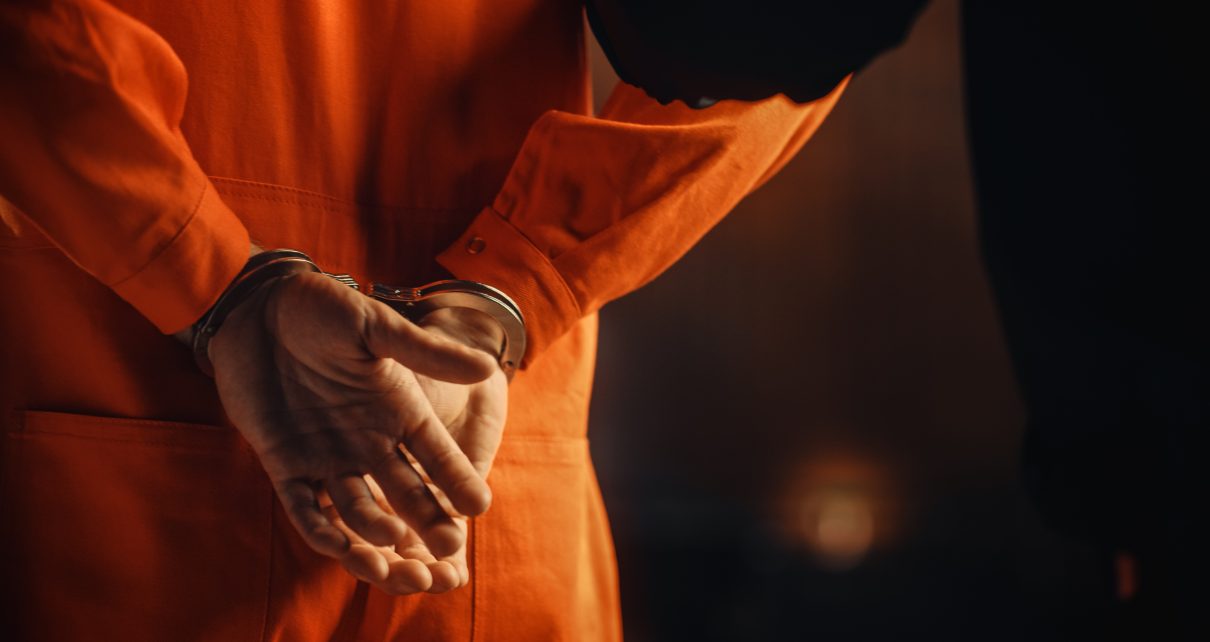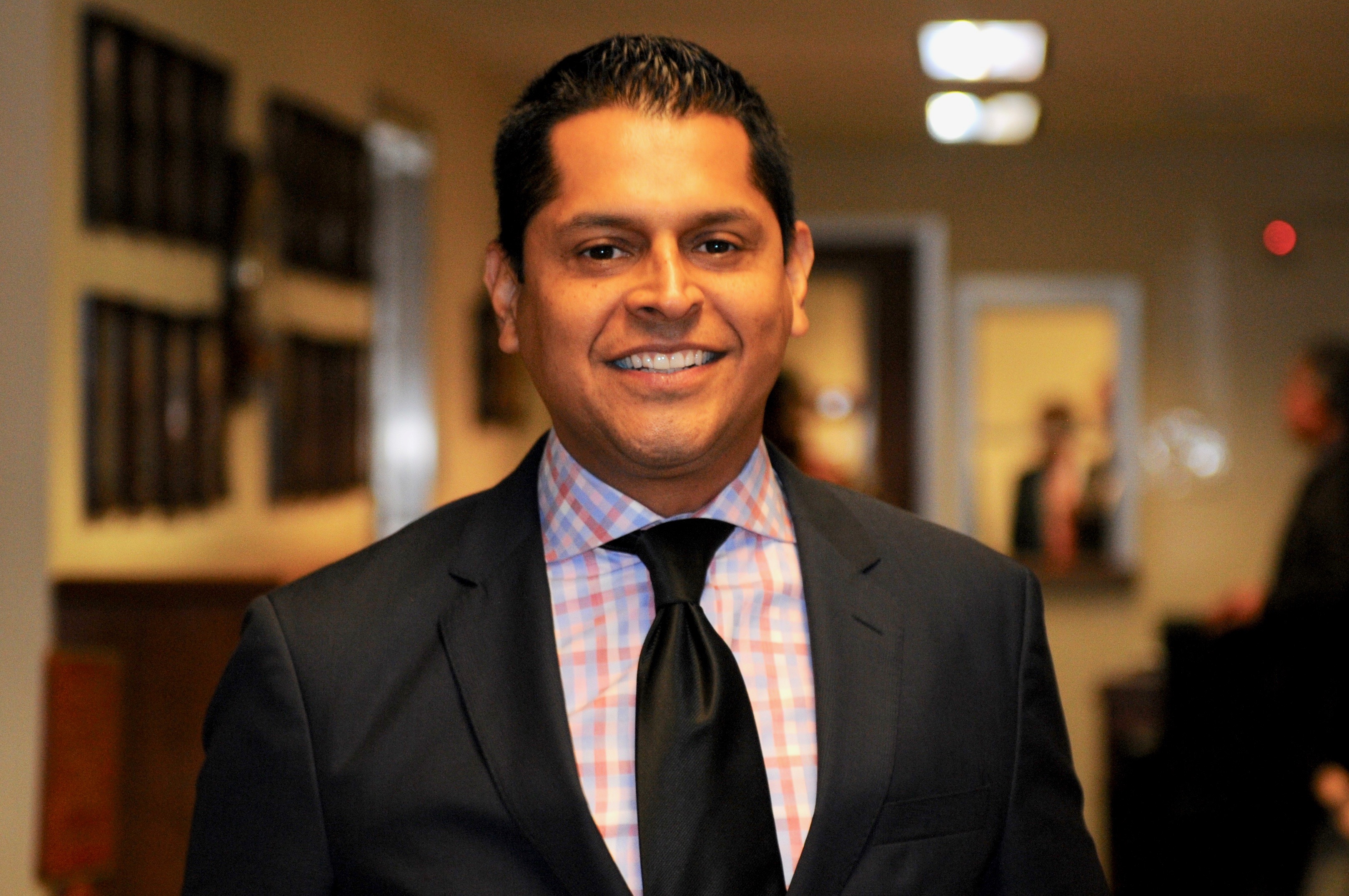
Handcuffed Male Prisoner. (Photo: Gorodenkoff/Shutterstock)
California’s ‘Pathways’ From Juvenile Incarceration to College Campuses
Will their criminal history and status be withheld from public university dorm mates, roommates and teachers?
By Katy Grimes, October 11, 2024 5:45 am
California’s push for “decarceration” has led to chaos in cities throughout the state. “Decarceration” on the surface sounds viable: “How formerly incarcerated people and former detention staff are coming together to build a future of work without youth incarceration,” one decarceration group says.
I don’t know anyone who doesn’t want to see California’s incarcerated youth thrive and become productive, contributing members of society. There are those who sincerely want to get kids and teens back into their communities and not committing more crimes. But there are too many in the state with other agendas.
A program was created by the California Legislature in 2020 to send teens who are convicted juvenile criminals and served time in a juvenile prison facility, to California’s state colleges and universities under the guise of “re-entry into communities.” Will their criminal history and status be withheld from public university dorm mates, roommates and teachers?
Just imagine a gang member incarcerated for murder is placed in a CSU or UC campus dorm by a county probation officer… What about the kids who worked hard in high school, stayed out of trouble, and didn’t get into that college? And what about the kid who did make it into that college who has no idea that his roommate served time for a gang murder?
Decarceration is a failure
We’ve already witnessed and lived with an attempt at decarceration with 2011’s Assembly Bill 109, former Gov. Jerry Brown’s “prison realignment” which “realigned” California’s overcrowded prison system, shifting responsibility of repeat, newly classified “nonviolent” offenders from state prisons to county jails. Those released were assigned county probation officers rather than state parole officers. Many of those newly “non-violent” criminals let out of county jails due to overcrowding are living on California streets, on parkways, rivers, and canals, and using the streets as their toilets.
Or 2014’s Proposition 47. Voters were promised magical transformation of California’s neighborhoods and schools if they passed Prop. 47.
Proposition 47, which was passed by tragically misinformed voters in 2014, and flagrantly titled “The Safe Neighborhoods and Schools Act” by then Attorney General Kamala Harris, reduced a host of serious felonies to misdemeanors, including drug crimes, date rape, and all thefts under $950, even for repeat offenders who steal every day. And it decriminalized drug possession from a felony to a misdemeanor, removed law enforcement’s ability to make an arrest in most circumstances, as well as removing judges’ ability to order drug rehabilitation programs rather than incarceration.
So much for Safe Neighborhoods and Schools.
Behind the scenes, California lawmakers and appointed bureaucrats have taken the decarceration movement and run with it. Democrat lawmakers and governors have whittled away California’s very successful Three Strikes law bringing back habitual criminals with no consequences.
There have been calls for the closure of California’s juvenile prisons by the left for many years. And as the left, Democrats and Gov. Newsom orchestrated “criminal justice reform” by changing the laws defining crime, or reclassified violent crimes “non-violent,” they have done that with juvenile crimes. Lots of incarcerated violent criminals were able to petition the court for a reduced sentence after Prop. 57 was passed, making their violent felony, not-so-violent anymore.
This allowed Democrats and the hard left to push for closure of California’s juvenile prisons just as they have done with state prisons.
This “re-entry into communities” sounds like just the thing that would help facilitate a teen’s recovery… a recovery perhaps from drug or alcohol addiction, but not from serious crimes. That takes a well-coordinated parole program, and a lot of accountability.
The purpose of prison and jail is to separate the criminals from society through incarceration so they are not able to harm innocent people, and to make them pay for their crimes through retribution. Rehabilitation is supposed to assist with changing criminals into law-abiding citizens once again. But not every criminal can be rehabilitated.
The OCYR – the Office of Community Youth and Restoration – was created in 2020 with Senate Bill 823, buried in a budget trailer bill.
The OCYR prepared a document designed to be the roadmap for “youth restoration.” Titled, “Building Higher Education Pathways for Youth in Secure Treatment Facilities in California: A Call to Action,” the document states:
California is presented with an unprecedented opportunity to vault to the forefront of national juvenile justice practice by transforming its youth incarceration system from one focused overwhelmingly on punishment to one that can offer youth in confinement genuine
opportunities to dramatically improve their lives.
The goal is “to build viable higher education pathways—whether through college courses and credentials or vocational training—that can help incarcerated youth find passage to opportunity.”
There are 5 principles in the report to help incarcerated youth re-enter society.
The fourth principle in the Guiding Principles report described the need for a high-quality curriculum and effective instructional practices in juvenile correctional facilities. Specifically, it
calls for “rigorous and relevant curricula aligned with state academic and career and technical education standards that utilize instructional methods, tools, materials, and practices that promote college- and career-readiness.”99
I don’t know anyone who would disagree with that. And they talk about online instruction within the juvenile correctional facility. If online college is good enough for college students forced to stay home during the Covid flu for nearly 3 years, it should also be sufficient for teens in a juvenile correctional facility.
Number 5 is “Support for Successful Reentry into the Community.”
The OCYR sites a study from The Journal of Correctional Education: “Will adjudicated youth return to school after residential placement? The results of a predictive validity study.”
The fifth principle in the Guiding Principles report described the need for procedures and supports to help youth successfully navigate reentry into the community. Specifically, it calls for “formal processes and procedures—through statutes, memoranda of understanding, and
practices—that ensure successful navigation across child- serving systems and smooth reentry into communities.”
On page 47 of the report, there is a particular admission that should have halted the entire program:
Reentry into communities following a period of confinement can be a complex and challenging process for youth, particularly when it comes to returning to school. Nevertheless, evidence underscores the significance of reintegration into educational settings or securing employment as pivotal factors in reducing recidivism and mitigating the long-term adverse effects linked with juvenile confinement.
Regrettably, there is a lack of rigorous research to effectively guide policy or practice concerning the reentry of juveniles or young adults. Despite this, the peer-reviewed research literature does present a wealth of practice-based recommendations, predominantly focusing on issues related to high school reentry for these youth.
Is the state of California using teen juvenile offenders and California’s non-incarcerated college teens as a big social experiment?
The OCYR ignores this stark admission, and moves on to “oh well, let’s do it anyway.”
Despite this, the peer-reviewed research literature does present a wealth of practice-based recommendations, predominantly focusing on issues related to high school reentry for these youth.
For youth who are reentering and attending postsecondary institutions, several additional supports have been suggested that include:
• Mentoring support, and, where possible, connection with a “credible mentor” or ambassador who can help the youth successfully navigate the educational transition.
There are several programs addressing the education formerly incarcerated youth:
Rising Scholars
The Rising Scholars Network comprises several participating California Community Colleges and is devoted to aiding incarcerated and formerly incarcerated students. They provide degree- and certificate-granting programs within correctional facilities as well as on-campus
support for students involved in the criminal legal system.
Project Rebound
Project Rebound is a program designed to support the higher education and successful reintegration of formerly incarcerated individuals into the California State University system.
Underground Scholars
Underground Scholars was founded in spring 2013 by formerly incarcerated and justice system-impacted students at UC Berkeley. As members graduated and moved to different campuses within the UC system for their graduate studies, they initiated chapters at these locations. Currently, the organization has established or is in the process of developing chapters at nine UC schools.
Prison Education Project
The Prison Education Project (PEP) offers educational opportunities to incarcerated individuals in 47 correctional facilities throughout California. PEP runs a Reintegration Academy, a 10-week program that invites 20-30 parolees onto a college campus. Participants are screened by the Department of Corrections and Rehabilitation’s Southern Region.
Project Change
Project Change is the first community college supported program in California to provide wrap-around student support services, direct access to postsecondary education for incarcerated youth, and in-person college instruction inside juvenile youth facilities. The program links students to various resources and programs at the College of San Mateo.
This is how formerly incarcerated juveniles are living in dorms and taking classes at CSU Sacramento, UC Berkeley, and Community Colleges.
The Globe has submitted California Public Records Act Requests to the University of California, California State University and California Community Colleges systems, requesting the numbers of formerly incarcerated juvenile criminals now attending California’s public universities and colleges.
The California Globe has submitted California Public Records Act requests to each branch of the state’s higher education system for records of formerly incarcerated students in these programs, as well as how many live in college dormitories.
- Gavin Newsom is the First Governor to Make Homelessness a Way of Life - December 8, 2025
- Byrna Files Lawsuit Against CA for Blocking Ammunition Sales of Less-Lethal Weapons - December 8, 2025
- Hypocrite Alert: Gov. Newsom Blames Trump For Abandoning LA Fire Survivors - December 5, 2025





Imagine having a dorm roommate assigned to you who murdered people as a juvenile.
People need to face reality. Some people can’t be fixed.
Such a shame another social experiment that will set up a high percentage of troubled teens to fail! A 10 week re entry into an education is not adequate to then be admitted to college!
These progressive feel good solutions are not solutions they are cruel social experiments. Rehabilitation can be accomplished in a different setting from a college campus. Once they complete that program then possibly they can take the next step to better their lives.
Throwing a child into the deep end is no guarantee they will learn to swim and survive!
Uugh, Crazifornia!